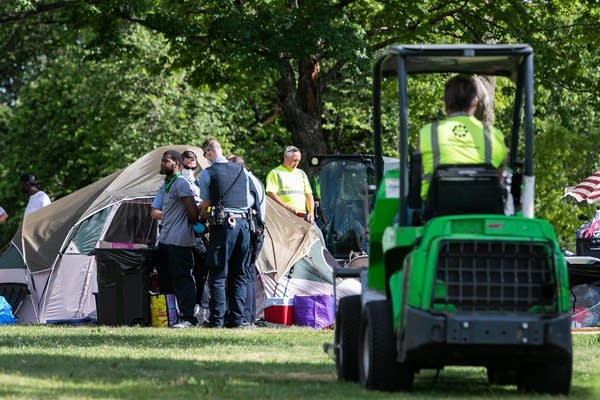Park officials remove remainder of Powderhorn east encampment after most people leave

A Powderhorn encampment resident who referred to himself as Squad is arrested by park police outside his tent at the east Powderhorn encampment. On Monday, the east camp was cleared by Minneapolis and park police, as well as the city's park board contractors. Many residents had sought shelter elsewhere over the weekend at different parks.
Ben Hovland for MPR News
Go Deeper.
Create an account or log in to save stories.
Like this?
Thanks for liking this story! We have added it to a list of your favorite stories.


